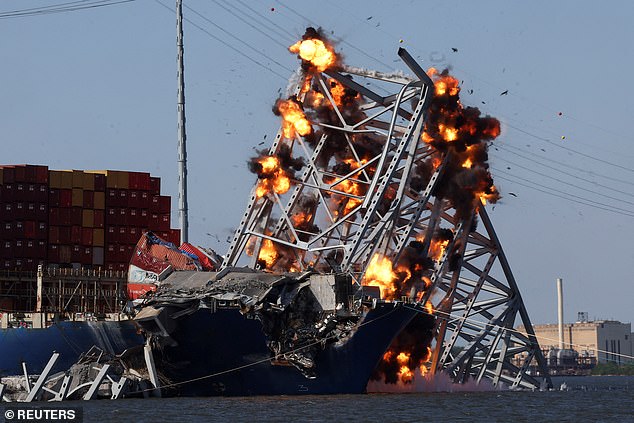- The Key Bridge suffered a series of explosions to disentangle it from the Dali
- Officials say Dali could float out of river mouth in days
- Once Dalí is gone, normal commerce could resume, bringing relief.
The remaining pieces of the Francis Scott Key Bridge have been strategically removed after engineers executed a controlled demolition.
Removal of the protruding bridge structure will now allow authorities to remove the freighter Dali from the wreckage area, restoring operation to Baltimore’s seaport, the ninth busiest in the country.
On March 26, the ship suffered a power outage and crashed into one of the Key Bridge’s support columns, causing the entire bridge to collapse and killing six construction workers. The ship has been grounded since then and the explosions set off by the crews were a big step in freeing the 984-foot ship.
Officials said the demolition went ahead as planned. Once the few remaining steel beams still resting on the Dali’s bow are removed and the underwater debris is removed, the process of moving the ship away from the crash site will begin.
The series of explosives placed by engineering experts explode in an effort to bring down the remaining span of the bridge trapping the Dali and cutting off the Port of Baltimore.
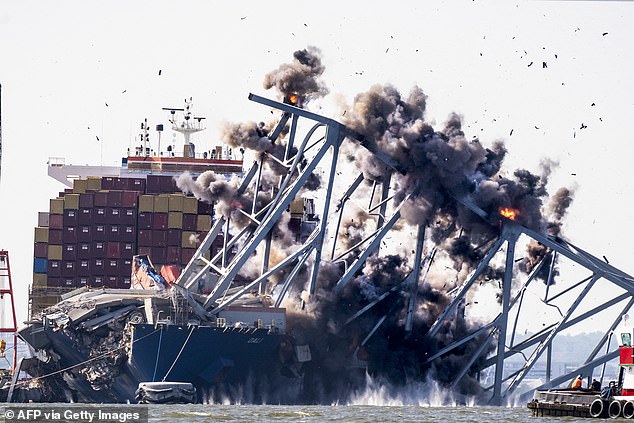
The explosion is seen from a frontal angle. This is moments before the bridge falls into the river.
The launching of the ship is likely to begin in the coming days. Several tugboats will then guide the crippled ship to a nearby port terminal, where she will likely remain for a few weeks while repairs are made.
“This was a very important milestone for our advancement,” Col. Estee Pinchasin, commander of the Baltimore District of the Army Corps of Engineers, said just after the demolition.
Pinchasin said crews do not anticipate having to use more explosives to free the ship.
There was the added complication that all 21 crew members have been aboard the Dali for the past 49 days, but none of them were injured, according to Capt. David O’Connell, port commander of Baltimore.
The Indian and Sri Lankan men on board have not been allowed to leave since the disaster struck as an FBI investigation into the cause of the Dali’s power outage and subsequent destruction of the bridge continues.
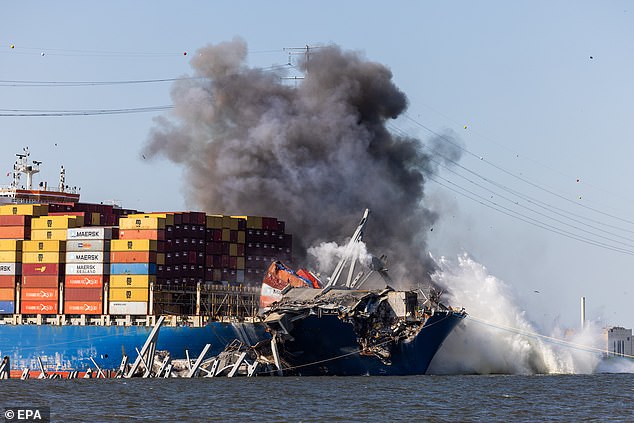
The bridge collapses into the water, creating a large wave that crashes back into Dali, who is on the ground.
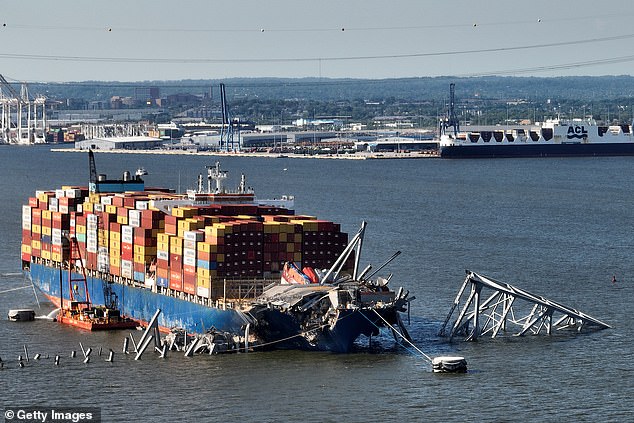
The aftermath of the controlled explosion can be seen. Authorities say the demolition went as planned and do not anticipate that more explosives will be needed to free Dalí.
The National Transportation Safety Board is also conducting an investigation into the bridge collapse.
Engineers spent weeks planning how they would use explosives to bring down the bridge span, which was estimated to be 500 feet long and weighed 600 tons.
The demolition was originally scheduled for Sunday, but was postponed due to storms.
The controlled demolition comes as an Italian industrial company released its design for a structure that could replace the Key Bridge.
WeBuild Group submitted preliminary design plans to Maryland officials on May 3 for the reconstruction of the Baltimore Bridge. The project could cost $1.9 billion and take four years to complete.

Last week, authorities recovered and identified the latest victim of the collapse, naming him as 37-year-old José Mynor López (pictured).
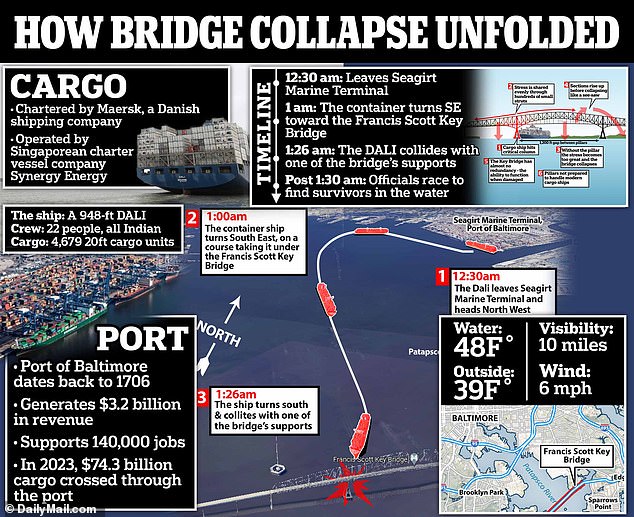
State and federal authorities were also able to complete months-long recovery efforts after the body of 37-year-old construction worker José Mynor López was found a week ago.
Unfortunately, the six construction workers, all Latino immigrants, were caught in the collapse while filling potholes on the bridge late at night.
They were presumed dead almost immediately because the river’s upper 40-degree temperatures were cold enough to cause hypothermia within three minutes.
The discovery of the sixth and final body “marks an important milestone in our recovery efforts and provides closure for the loved ones of the six workers who lost their lives in this tragic event,” said Col. Roland L. Butler Jr., superintendent from the Maryland State Police Department.

